I am currently making a custom UITableView cell as shown below. The custom UITableViewCell is in its own nib file that I am calling from another ViewController. (like so)
// RegistrationViewController.m
//Sets number of sections in the table
- (NSInteger)numberOfSectionsInTableView:(UITableView *)tableView {
return 2;
}
// Sets the number of rows in each section.
- (NSInteger)tableView:(UITableView *)tableView numberOfRowsInSection:(NSInteger)section {
return 1;
}
//Loads both Custom cells into each section
- (UITableViewCell *)tableView:(UITableView *)tableView cellForRowAtIndexPath:(NSIndexPath *)indexPath {
//Registration Cell
static NSString *CellIdentifier = @"CustomRegCell";
static NSString *CellNib = @"LogInCustomCell";
UITableViewCell *cell = (UITableViewCell *)[tableView dequeueReusableCellWithIdentifier:CellIdentifier];
if (cell == nil) {
NSArray *nib = [[NSBundle mainBundle] loadNibNamed:CellNib owner:self options:nil];
cell = (UITableViewCell *)[nib objectAtIndex:0];
}
//Registration Button
static NSString *CellButtonIdentifier = @"CustomSubmitCell";
static NSString *CellButtonNib = @"LogInSubmitButton";
UITableViewCell *cellButton = (UITableViewCell *)[tableView dequeueReusableCellWithIdentifier:CellButtonIdentifier];
if (cellButton == nil) {
NSArray *nibButton = [[NSBundle mainBundle] loadNibNamed:CellButtonNib owner:self options:nil];
cellButton = (UITableViewCell *)[nibButton objectAtIndex:0];
}
if (indexPath.section == 0) {
cell.selectionStyle = UITableViewCellSelectionStyleNone; //Stops the UITableViewCell from being selectable
[self registrationControll];
//TODO: call method that controls this cell
return cell;
}
if (indexPath.section == 1) {
cellButton.selectionStyle = UITableViewCellSelectionStyleNone; //Stops the UITableViewCell from being selectable
return cellButton;
}
return nil;
}
It has four text fields that I am wanting to limit the size of the string that can be entered to five. (I'm only trying it with the first text field so far but its not even entering the textField:shouldChangeCharactersInRange:replacementString: delegate method (found this out while debugging the app) here is the code for the part I am trying to restrict the amount of characters that can be entered.
// RegistrationViewController.m
//textField:shouldChangeCharactersInRange:replacementString:
- (BOOL)textField:(UITextField *)textField shouldChangeCharactersInRange:(NSRange)range replacementString:(NSString *)string
{
int length = [regFieldOne.text length] ;
if (length >= MAXLENGTH && ![string isEqualToString:@""]) {
regFieldOne.text = [regFieldOne.text substringToIndex:MAXLENGTH];
return NO;
}
return YES;
}

I think I have limited my error to one of two things.
Maybe I haven't set everything up in interface builder correctly.
OR it has something to so with delegation... which I have a general understanding of and is why I think the issue might be here, but with such a complex file structure I'm not sure how or if this is right.
Any help, explanations, suggestions etc would be greatly appreciated.